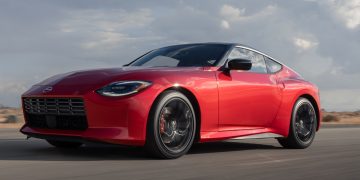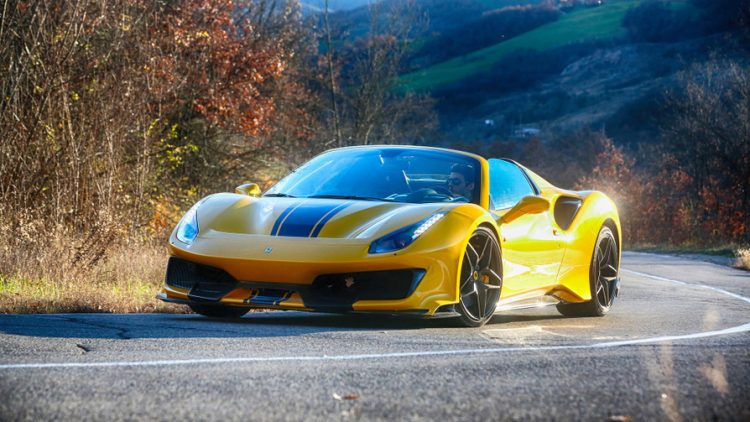The ongoing battle between car culture and environmental protection has become an increasingly significant topic of debate in recent years. On one side, there’s the deep-rooted and cherished culture of car enthusiasts, with its emphasis on freedom, convenience, and personal identity. On the other, there’s the growing global demand for sustainable practices and the urgent need to address climate change, reduce carbon emissions, and transition to more eco-friendly alternatives. As cities become more congested, air quality declines, and environmental regulations tighten, the relationship between these two forces is becoming more complex and strained.
This article explores the conflict between automotive culture—with its long-standing traditions of vehicle design, performance, and personal expression—and the global push for environmental sustainability. It also considers whether this conflict is intensifying and how both sides of the issue may evolve in the future.
1. The Deep Roots of Car Culture
Car culture has deep roots in many parts of the world, particularly in Western countries like the United States, where cars have long been symbols of freedom, independence, and personal identity. For many, owning a car represents more than just a means of transportation—it’s a lifestyle choice, a passion, and an expression of personal style. Cars are intricately woven into pop culture, from films like The Fast and the Furious to iconic automotive brands like Ford, Chevrolet, Porsche, and Ferrari. These brands have not only shaped the automotive industry but have also cultivated communities of loyal fans and enthusiasts.
From classic car collections to performance-driven motorsports like Formula 1 and NASCAR, car culture is a deeply embedded part of global social fabric. Events like car shows, rallies, and street racing are significant social gatherings where enthusiasts celebrate their shared passion for automobiles. Car culture also involves a sense of nostalgia, as owners and fans often associate specific models with particular eras, memories, or personal milestones.
2. The Environmental Impact of Car Culture
While car culture has contributed to personal freedom and convenience, it has also led to significant environmental challenges. Automobiles, particularly those powered by internal combustion engines (ICE), are major sources of greenhouse gas emissions, including carbon dioxide (CO2), nitrogen oxides (NOx), and particulate matter. These pollutants contribute directly to global warming, climate change, and air quality issues.
The global fleet of vehicles is one of the largest contributors to fossil fuel consumption, and this has serious consequences for the planet. The world’s obsession with cars has led to sprawling urbanization, with cities designed to accommodate personal vehicles rather than public transportation. This has resulted in increased traffic congestion, longer commute times, and greater urban pollution.
According to the International Energy Agency (IEA), the transport sector is responsible for around 24% of global energy-related CO2 emissions, with road vehicles accounting for nearly three-quarters of those emissions. This stark reality presents a growing dilemma for car enthusiasts, manufacturers, and policymakers alike: how can we reconcile the widespread love of cars with the urgent need for environmental protection?
3. Environmental Protection Efforts and Regulations
In response to these environmental concerns, governments around the world have been tightening emissions standards and fuel efficiency regulations. For example, in the European Union, Euro 6 emissions standards limit the amount of nitrogen oxide (NOx) and carbon monoxide (CO) that vehicles can emit. Similarly, the California Air Resources Board (CARB) in the United States has introduced strict regulations to reduce vehicle emissions and improve air quality.
As the world pushes for a transition toward cleaner, greener technologies, automakers are facing growing pressure to adapt. Many countries, including Norway, France, and the United Kingdom, have announced plans to phase out gasoline and diesel vehicles in favor of electric vehicles (EVs). Cities like London and Paris have already implemented low-emission zones, where only electric or hybrid vehicles are allowed to enter certain areas.
At the same time, environmental advocacy groups have been raising awareness about the impact of consumerism and the car-centric lifestyle on the environment. Activists argue that reducing our dependence on private cars could not only reduce emissions but also alleviate traffic congestion, improve public health, and create more livable cities.
4. The Transition to Electric Vehicles (EVs)
One of the most significant responses to the environmental concerns surrounding traditional cars is the rise of the electric vehicle (EV). EVs offer the promise of a cleaner, more sustainable future by eliminating tailpipe emissions. Companies like Tesla, Nissan, and BMW have made substantial strides in developing electric cars that can match the performance and style of their internal combustion engine counterparts. Electric vehicles are increasingly seen as the solution to many of the environmental problems caused by traditional automobiles.
While the shift to electric vehicles is seen as a step in the right direction, it does not entirely resolve the conflict between car culture and environmental protection. The production of electric cars, particularly the extraction of lithium and cobalt for batteries, still poses environmental challenges. Additionally, the electric grid must be powered by renewable sources for EVs to truly be considered zero-emission vehicles. However, these challenges are being actively addressed by manufacturers and governments, with innovations in battery technology and sustainable mining practices underway.
EVs also represent a shift in how we think about car ownership. As cities work toward sustainable mobility, shared mobility services like ride-hailing and car-sharing are becoming more popular. These services, along with the rise of public transportation and bike-sharing, are changing the way people view personal transportation.

5. The Role of Car Culture in the Shift Toward Sustainability
Despite the push for more environmentally friendly vehicles, car culture is not going away anytime soon. The question remains: can the two forces—car culture and environmental protection—coexist harmoniously? The answer lies in the evolution of car culture itself.
As environmental awareness grows, many car enthusiasts are beginning to embrace electric cars and hybrids, recognizing that these vehicles can still offer the performance, style, and innovation they value. For instance, Porsche’s electric Taycan offers high performance, luxurious design, and cutting-edge technology, catering to consumers who want to maintain their love for speed and engineering excellence while reducing their environmental impact.
Moreover, the rise of motorsport events like Formula E, an all-electric racing series, has brought together car enthusiasts and environmental advocates. These events showcase the exciting potential of electric vehicles in competitive settings, helping bridge the gap between racing passion and sustainability.
Car culture is also evolving in response to environmental concerns. Restoration movements, where enthusiasts restore classic cars using more sustainable materials and eco-friendly processes, have gained traction in recent years. This trend helps preserve the cultural value of older vehicles while minimizing their environmental impact.
6. The Future: Can Car Culture and Environmental Protection Coexist?
The conflict between car culture and environmental protection is undeniably significant, but it is not insurmountable. As technology continues to evolve, there is increasing potential for both sides to find common ground. The shift to electric vehicles is a major step in the right direction, but it’s not the only solution. Governments, manufacturers, and consumers all play a role in shaping a future where sustainable mobility becomes the norm.
In the future, car culture may evolve into a more eco-conscious and inclusive movement. Traditional petrolheads may embrace electric motorsports and eco-friendly modifications, while still celebrating the aesthetics, performance, and history of their favorite vehicles. Similarly, environmentalists and sustainability advocates may come to appreciate the technological innovations in the automotive world, recognizing that cars can be both culturally significant and environmentally responsible.
Ultimately, the ongoing evolution of both car culture and environmental protection will likely lead to a new hybrid of values—one that combines the passion for automobiles with the urgency for sustainability. Through innovation, awareness, and collaboration, it is possible to bridge the gap between these two seemingly opposing forces, creating a future where cars continue to inspire, while also protecting the planet for generations to come.


































Discussion about this post